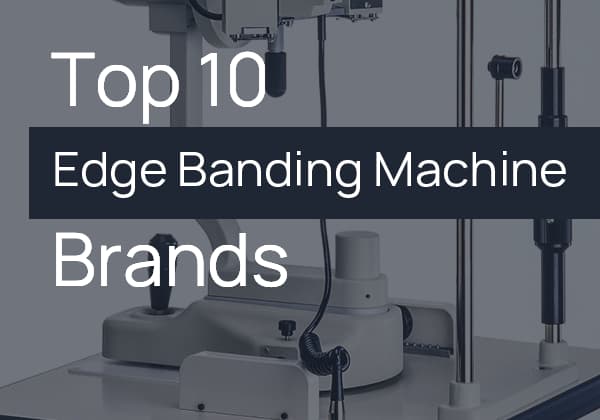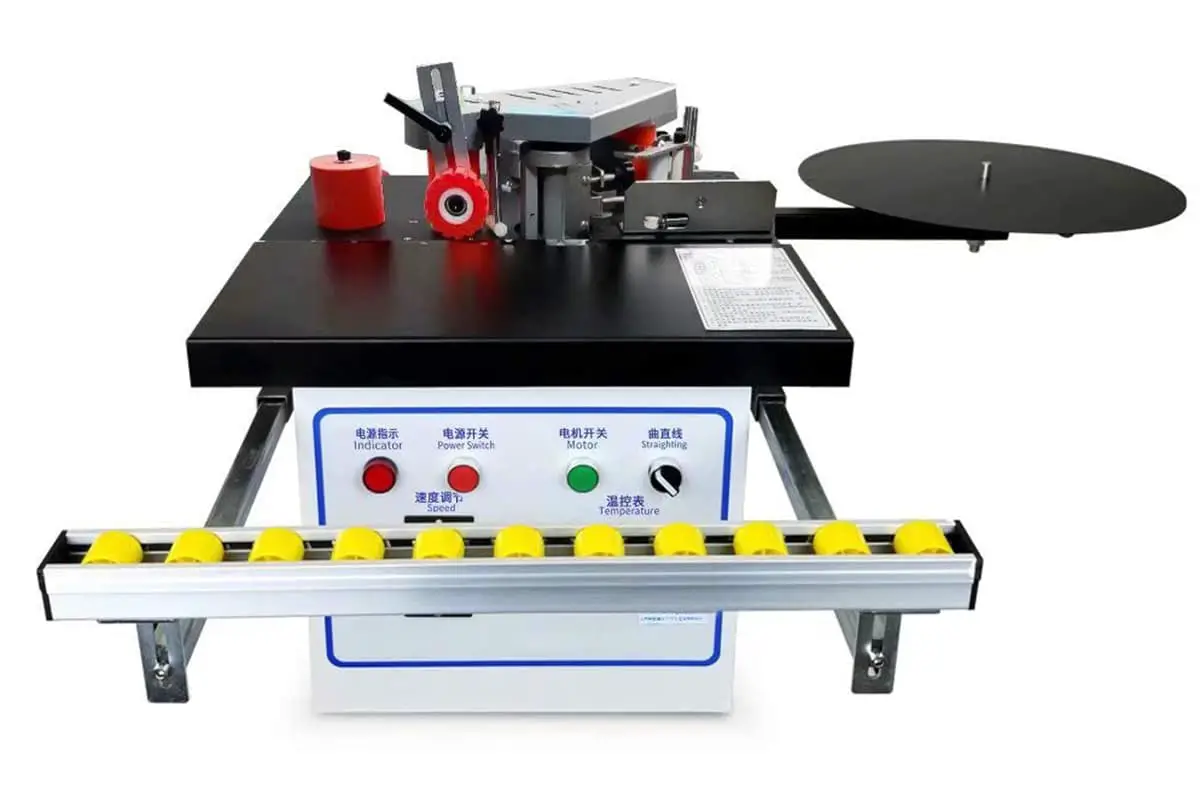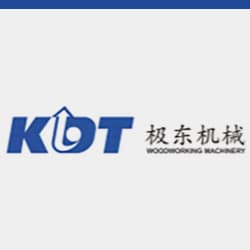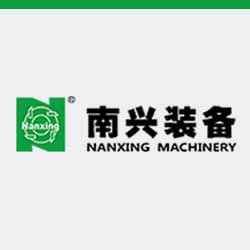
Have you ever stopped to appreciate the unsung heroes behind your favorite furniture? Edge banding machines, the workhorses of the woodworking industry, play a crucial role in creating sleek and durable edges. In this article, we’ll explore the top manufacturers of these essential tools, shedding light on their innovations and contributions to the craft. Get ready to discover the artistry and engineering that goes into every perfectly finished edge.

Edge banding machines play a crucial role in modern woodworking and furniture manufacturing, providing a seamless finish to raw panel edges. These machines apply thin strips of material—ranging from wood veneer to PVC and melamine—onto the edges of wood panels, thereby enhancing their durability, aesthetics, and functionality.
Edge banding is essential for several reasons. It shields the core material of panels from moisture, which can cause swelling and damage over time. Additionally, it gives furniture a polished, professional look by covering raw edges. Proper edge banding ensures the longevity of furniture by protecting edges from chipping and wear.
Edge banding materials vary in type and application:
Edge banding machines automate the process of applying edge bands to panels. The basic steps involved in edge banding include:
Initially, edge banding was a manual process, requiring considerable skill and effort. Semi-automatic machines introduced automation to some parts of the process, increasing efficiency and reducing manual labor. Modern edge banding machines are fully automated, capable of handling high production volumes with minimal human intervention. They offer advanced features such as pre-milling, which smooths the panel edge before glue application, and corner rounding, which ensures a neat finish on corners.
Edge banding machines are used in various applications, including furniture manufacturing to produce cabinets, wardrobes, and other furniture items with neat and durable edges. They are also essential in interior design for finishing panel edges in interior fittings and decor. Custom woodworking projects in small workshops or DIY settings benefit from professional-quality finishes provided by these machines.
Using an edge banding machine offers several advantages. It automates the edge banding process, significantly reducing production time. These machines ensure uniform application of edge bands, resulting in high-quality finishes. They can handle various materials and thicknesses, making them suitable for diverse woodworking projects.
Edge banding machines are indispensable in the woodworking industry, providing efficient, consistent, and high-quality edge finishing solutions. As technology advances, these machines continue to evolve, offering more sophisticated features and capabilities to meet the growing demands of the market.
Edge banding machines come in various types, each designed to meet specific production needs and scales. Understanding these types helps users select the most suitable machine for their woodworking and furniture-making projects.
Manual edge banding machines require significant operator involvement and are ideal for small workshops or DIY enthusiasts. These machines are affordable and straightforward to use, making them suitable for low-volume production. Operators manually feed panels into the machine, apply glue, and attach the edge banding material. For instance, a small furniture repair shop that handles occasional custom orders would benefit from a manual edge banding machine due to its flexibility and lower cost.
Semi-automatic edge banding machines offer a balance between manual and automatic operations. These machines are suitable for small to medium-sized businesses that require higher efficiency than manual machines but do not have the volume to justify fully automated systems. Semi-automatic machines typically include functions such as preheating, gluing, trimming, scraping, and polishing. A medium-sized cabinetry shop producing custom kitchen cabinets might find a semi-automatic machine beneficial due to its enhanced efficiency and moderate cost.
Automatic edge banding machines are designed for high-volume production environments. These machines offer the highest level of efficiency and precision with minimal operator intervention. They feature comprehensive functions, including pre-grinding, gluing, banding, binding, rough trimming, fine trimming, scoring, polishing, and slotting. Large furniture manufacturers with continuous production lines will find automatic edge banding machines indispensable due to their ability to maintain consistent quality and high productivity.
Portable edge banding machines are versatile and designed for on-site use. These machines are perfect for repairs, touch-ups, or smaller projects where mobility is a key factor. Portable machines are often used in carpentry and small shops where space and flexibility are important. For example, a contractor working on-site to install custom shelving units would benefit from a portable edge banding machine, allowing them to perform edge banding tasks directly at the job site.
By understanding the different types and features of edge banding machines, users can select the most appropriate machine for their specific woodworking and furniture-making needs.
Edge banding machines are equipped with a variety of advanced features and technologies that enhance their performance, efficiency, and versatility in woodworking and furniture manufacturing. Understanding these key features and technologies can help users select the most suitable machine for their specific needs and optimize their production processes.
Automated feeding systems ensure consistent speed and alignment of panels as they move through the machine, minimizing manual intervention and reducing labor costs. By maintaining uniform feeding rates, these systems help achieve precise and consistent edge banding results. For example, in high-volume furniture production, automated feeding can significantly increase throughput and maintain quality standards.
Glue application is critical in the edge banding process. Modern machines offer advanced technologies to ensure strong and durable bonds:
Trimming and buffing units are essential for achieving a clean and professional finish on edge-banded panels:
Pre-milling functions use double milling knives to trim wave marks, burrs, or non-vertical phenomena caused by cutting processes. This step is crucial for achieving a perfect edge before banding, especially when working with uneven or rough panel edges. Pre-milling ensures that the edge band adheres smoothly and evenly to the panel, improving the overall quality of the finish.
Corner trimming devices round the corners of the board for a smoother and safer finish. This feature is particularly important for furniture with exposed edges, as it prevents sharp corners that could cause injuries. Corner trimming enhances both the aesthetics and safety of the finished product.
Edge scraping units eliminate ripple marks produced during the trimming process, resulting in a smoother and more aesthetically pleasing edge. These units are especially useful when working with high-gloss or delicate edge banding materials, where any imperfections would be highly visible.
Modern edge banding machines are equipped with advanced control systems that provide precise and user-friendly operation:
Safety is a critical consideration in edge banding machine design, and modern machines incorporate various safety features to protect operators:
Edge banding machines can be integrated with other advanced technologies to enhance their capabilities and performance:
By leveraging these advanced features and technologies, edge banding machines provide efficient, precise, and high-quality edge finishing solutions for a wide range of woodworking and furniture manufacturing applications.


Country: Germany
Founded: 1960
About the company:
Homag Group is a globally renowned integrated solution provider in the woodworking industry. With international production plants and sales and service companies, Homag Group has around 6,500 employees in over 100 countries and holds over 30% of the global market share.
Homag Group offers digital production solutions to its customers, including a comprehensive software suite and data continuity from the sales end to the entire production process. The company’s customers use Homag Group’s high-tech machines and equipment to manufacture a range of products, including living room and office furniture, kitchen furniture, solid wood and composite floors, windows, doors, stairs, and integral wood structure houses.
Homag Group’s offerings range from single machine equipment for industrial enterprises to complete networked production lines for highly industrialized, customized furniture production. Its unique services, including those around the production machines and equipment and corresponding control software, set it apart in the industry.

Country: Italy
Founded: 1969
About the company:
BIESSE is a company dedicated to the wood processing industry. Established since 1969, it has been providing comprehensive technology and solution offerings to furniture, doors, windows and wood building component manufacturers. In recent years, the company has also expanded its operations into the plastic processing machinery sector, offering specialized solutions for this market.
The company is committed to continuous improvement and invests in the development of innovative solutions to ensure the highest quality products and services. BIESSE places a strong emphasis on innovation and is dedicated to providing excellent processing processes and products to its customers.
The group’s main unique technical solutions include: 5-axis operating equipment with HSD motorized spindle, which can process parts with complex geometric shapes, AirForce system, panel edge bonding equipment to ensure unparalleled processing quality, double thrusters, exclusive patents of all Biesse beam saws, which realize the optimal management of production peaks, and bSuite software components, which enable operators to operate Biesse’s machines without mastering special IT technology.

Country: Italy
Founded: 1935
About the company:
SCM Group is a leading woodworking machinery enterprise, renowned for its high sales volume globally. Headquartered in Italy, the Group boasts 26 factories and 27 subsidiaries, with 60 years of experience and over 2 million machines operating worldwide. It is highly active in the field of solid wood and plate processing.
SCM Group’s portfolio of brands includes SCM, MORBIDELLI, STEFANI, IDM, GABBIANI, DMC, CELASCHI, SERGIANI, and others. With 4000 employees and an annual sales volume of 700 million euros, the Group boasts strong financial strength and a global presence in the industry.
70% of SCM Group’s products are exported to 120 countries through its branches, dealers, and agents.
Shenzhen Eastman Trading Co., Ltd., a rapidly growing subsidiary of SCM Group, has extensive experience in the Chinese market. Our headquarters are located in both Shenzhen and Beijing.

Country: Germany
Founded: 1951
About the company:
The global high-precision sawing technology company, Schelling Group of Austria, and IMA Group, a leading provider of global automatic edge banding, drilling, and numerical control technology, merged in 2015 to form the IMASchelling Group. The Group currently employs 1320 people worldwide, with an annual sales volume of 250 million euros in 2015.
Founded in 1951 and headquartered in Lubeck, Germany, IMA provides professional panel furniture manufacturers with customized flexible production lines, advanced laser edge banding machines, drill rows, processing centers, and other tailored whole plant solutions. The company operates 10 sales and service companies, and has over 40 business partners in more than 60 countries.
Established in 1917, Schelling Company of Austria has become a global leader in high-end precision sawing technology. Located in southern Austria at the base of the picturesque Alps, Schwarzach specializes in the wood products and wood-based panel industry, as well as sawing and cutting of materials used in aviation, printed circuit boards, non-ferrous metals, steel, plastics, and various advanced composites.
The company counts ThyssenKrupp Group of Germany, Siemens of Germany, Philips of the Netherlands, Volkswagen Group of Germany, and Shanghai Commercial Aircraft Manufacturing Company among its non-wood field customers.
In China, the companies of Yima Xielin Group are Yima (Guangzhou) International Trade Co., Ltd. and Xielin (Changzhou) Trade Co., Ltd. with service outlets located in Beijing, Guangzhou, Changzhou, Chengdu, and other cities throughout the country.
IMASchelling Group provides prompt and efficient service for Chinese customers, creating value for its clients.

Country: China
Founded: 2006
About the company:
Guangzhou Hongya CNC Machinery Co., Ltd. (KDT) is a leading enterprise in China’s woodworking machinery industry. Through continuous independent innovation and steady growth, KDT has established itself as a prominent brand in the modern panel furniture machinery sector.
KDT offers a comprehensive range of CNC panel furniture machinery equipment and automated production line solutions, including a series of edge banding machines, saws, multi-row drills, machining centers, and automated production equipment. The company’s dealers and customers are spread across more than 40 countries and regions globally.
Quality products and value creation are the company’s top priority for every furniture enterprise. Thanks to its customers’ trust, the company has experienced steady growth in sales revenue in recent years.
KDT’s key strengths are its independent technology development and quality management system. By bringing in high-quality professionals both domestically and internationally, the company has formed a strong team with a continuous focus on independent research and development.
In terms of quality management, KDT has implemented a high-assurance EP management system throughout all stages of production, from parts procurement to assembly, commissioning, sales, and service. The company operates modern and professional rack, sheet metal, and parts manufacturing enterprises.
KDT sources some parts from manufacturers in Europe, South Korea, and other countries and regions, ensuring a diverse and reliable procurement chain.

Country: China
Founded: 1996
About the company:
Nanxing Equipment Co., Ltd. was established in May 1996 and is a well-respected enterprise in China’s woodworking machinery industry. With a long product line and a diverse range of offerings, Nanxing Equipment provides customized solutions to meet customers’ needs and create value.
The company’s comprehensive solution enables customers to upgrade from standalone operations to a more flexible, integrated production process, helping to reduce labor costs, improve efficiency, and gain a competitive advantage.
Nanxing Equipment boasts strong R&D and innovation capabilities, with an international woodworking machinery R&D team. Its technology center has been recognized as a provincial enterprise technology center by Guangdong Province and an engineering technology research and development center for numerical control woodworking machinery by Guangdong Province.
Nanxing Equipment holds over 200 patents for various inventions, utility models, and appearance designs, and has been involved in the drafting of national industrial standards for numerical control woodworking machines. As a leader in the domestic panel woodworking machinery manufacturing industry, the company has extensive customer resources and a stable customer base, with many of the larger domestic panel furniture enterprises being users of its products.
Nanxing Equipment has a well-established distribution and service network covering all major cities in China and abroad, and its products are sold not only domestically but also exported to Europe, North and South America, Australia, the Middle East, Southeast Asia, Africa, and other countries and regions.
In the future, Nanxing Equipment will continue to prioritize R&D and manufacturing of panel woodworking machinery, with a focus on numerical control and automation products. The company will closely monitor market demand and continuously improve existing products and develop new ones, ensuring that the product quality meets international standards and making significant contributions to advancing the equipment levels of Chinese panel furniture enterprises.

Country: China
Founded: 1994
About the company:
MAS originated from woodworking cooperatives in the 1970s in Singapore and Malaysia and began its journey in the 1990s. Over the years, the company has been committed to innovation and has consistently incorporated high-speed, precision, openness, and complexity into its woodworking machinery.
In response to market demand, MAS has developed a range of CNC and intelligent woodworking machinery products, including spindles, saws, creative drills, and more, becoming a trusted partner for thousands of enterprises both domestically and abroad. The company is dedicated to creating value for its customers and has established itself as a rising star in China’s woodworking machinery industry.
MAS has inherited and carried forward the essence of traditional Chinese furniture manufacturing through its fine manufacturing processes, fulfilling its ambition of “manufacturing ancient Chinese crafts with modern professional CNC machinery”.
For many years, MAS has been dedicated to the industry, honest operation, scientific research, brand service, and social responsibility. The company’s achievements in these areas have made it a benchmark and brand in the industry.

Country: Germany
Founded: 1905
About the company:
The Weili Group, the largest producer of solid wood machinery in the world, was founded in 1905 in Germany. With over 100 years of experience in solid wood processing, the Weili Group provides high-performance and cost-effective wood processing equipment and system solutions, as well as intelligent production solutions that drive profits.
Adhering to the high quality standards of German machinery manufacturing, the Weili Group holds a strong advantage in wood processing equipment and technology, including solid wood processing milling, floor processing, finger jointing, European style wooden window production, and wooden house construction.
In 2010, the Weili Group acquired the German Haussel Company and officially entered the panel furniture equipment market. In 1996, the company established a wholly-owned subsidiary in China, Mike Weili (Yantai) Machinery Co., Ltd. The subsidiary is responsible for producing and selling high-tech woodworking machinery and equipment, serving the needs of the Chinese market and exporting products to various regions around the world.
Weili (Yantai) Wood Technology Co., Ltd. is another subsidiary fully invested by the Weili Group in China, established in 2009. It serves as a new professional marketing and service organization for the Weili Group in China.
With the Weili Group’s century-long experience in solid wood processing and over a decade of experience in China’s wood market, Weili China has established a comprehensive marketing network, a highly skilled expert team, and professional service personnel.
The company is committed to technological innovation and continuously helps its customers optimize production processes, improve efficiency, reduce labor and material costs, and enhance product quality.

Country: China
Founded: 2000
Products: Cutting saw (sliding table saw) series, full series of edge banding machine, row drill series, electronic cutting saw series, CNC machining center engraving machine series
About the company:
Unisunx is one of the leading enterprises in the woodworking machinery industry.
The enterprise has three production bases: Qingdao Unisunx Woodworking Machinery Co., Ltd., Qingdao Unisunx Bote Woodworking Machinery Co., Ltd., and Qingdao Unisunx CNC Machinery Manufacturing Co., Ltd.
Qingdao Unisunx Machinery Co., Ltd. is a leading manufacturer of panel furniture machinery, including CNC cutting machines, woodworking centers, panel saws (sliding table saws), edge banding machines, and multi-row drills, in China. The company also operates a professional trading company, Qingdao Unisunx Import and Export Trade Co., Ltd., to provide comprehensive woodworking machinery solutions for customers abroad.
After decades of growth, the company’s production facilities cover an area of over 70,000 square meters, and are staffed by a strong technical team and equipped with advanced detection equipment. The factories are located near Jiaozhou Bay and conveniently close to the airport and port, ensuring fast international and domestic logistics.
The company is ISO 9001 certified and its main products have received CE safety certification. The products are exported to more than 60 countries in Europe, Russia, Southeast Asia, the Middle East, North America, and Australia.
With a comprehensive sales system and after-sales service network, the company has more than 150 agents both domestically and internationally.

Country: China
Founded: 1995
About the company:
Dongguan Wellex Co., Ltd. is located in Dongguan, a historic and cultural city in Guangdong Province, near the Pearl River Estuary. The company was registered with the Dongguan Industrial and Commercial Bureau on December 21st, 1995.
Dongguan Wellex primarily focuses on the production and sales of woodworking machinery and accessories, cutting tools, and the wholesale and retail of water-based coatings and spare parts for woodworking machinery. The company also provides technical consultation, support, and after-sales service for woodworking machinery.
The company employs 160 people and has established a strong relationship with many retailers and agents of Dongguan machinery and equipment companies. With a wide range of products, competitive prices, and strong corporate strength, Dongguan Wellex is a reliable choice for customers.
The company values credit, adheres to contracts, and guarantees product quality, which has earned the trust of its customers. Its diverse business practices, combined with its principle of achieving small profits with quick turnover, have contributed to its success.
The company’s corporate purpose is to maintain integrity and realism, with a focus on delivering exceptional service and customer satisfaction. It actively listens to the needs of its customers and continuously strives to improve its products and services through innovation.
Selecting the right edge banding machine is crucial for ensuring efficient production and high-quality finishes in woodworking and furniture manufacturing. This guide will help you understand the key factors and considerations to make an informed decision.
Understanding the different types of edge banding machines is essential:
Ideal for small workshops or DIY enthusiasts, manual machines are affordable and simple to operate but require significant operator involvement. They are best for low-volume projects and occasional use.
Pros:
Cons:
Suitable for small to medium-sized businesses, these machines offer a balance between manual and automatic operations. They provide functions such as preheating, gluing, trimming, scraping, and polishing.
Pros:
Cons:
Designed for high-volume production environments, automatic machines offer the highest level of efficiency and precision with minimal operator intervention. They include advanced functions like pre-grinding, gluing, banding, binding, rough trimming, fine trimming, scoring, polishing, and slotting.
Pros:
Cons:
Versatile and suitable for on-site use, portable machines are perfect for repairs, touch-ups, or smaller projects where mobility is crucial.
Pros:
Cons:
The glue application system ensures a strong bond between the edge band and the panel. Common types include hot melt glue systems and pre-glued edge bands. Ensure the machine can handle the adhesive requirements specific to your projects.
Modern edge banding machines often come with trimming and buffing units to provide a smooth, finished edge. These units remove excess material and polish the edge band for a professional look.
Advanced control systems can automate many of the machine’s functions, enhancing precision and reducing operator error. Look for machines with intuitive interfaces and programmable settings for different materials and banding processes.
The feed speed of the machine determines how quickly it can process panels. Higher feed speeds are beneficial for large-scale production, but ensure the machine maintains quality at high speeds.
Consider machines that can handle various edge band materials such as PVC, ABS, wood veneer, and melamine. This versatility can add value by allowing you to work with different materials without needing multiple machines.
Ensure the edge banding machine can accommodate the dimensions of your typical projects. Some machines are designed for smaller panels, while others can handle larger pieces.
Choose a machine that aligns with your production volume. High-volume production environments benefit from fully automated machines, while small workshops may find manual or semi-automatic machines more suitable.
Your budget will play a critical role. Automatic machines offer greater efficiency but come with a higher price tag. Weigh the cost against the expected benefits and choose a machine that offers the best value for your investment.
Ensure you have enough space in your workshop for the machine. Fully automatic edge banding machines, in particular, require significant floor space.
Opt for machines from reputable manufacturers that offer reliable technical support and maintenance services. Regular maintenance is essential to keep the machine operating smoothly and efficiently. Inquire about the manufacturer’s maintenance recommendations and schedules, as well as the availability of spare parts and warranty coverage.
Ensure the machine can handle the specific materials you will be working with. Different machines are designed to work with various materials, including PVC, ABS, wood veneer, and more.
Evaluate the machine’s capacity and specifications to ensure it can meet your project requirements. Factors to consider include feed speed, panel thickness capacity, and edge thickness capacity.
Assess the build quality of the machine to ensure it can withstand continuous operation. Look for machines constructed from robust materials and manufactured with precision engineering techniques.
Consider machines equipped with advanced features such as automatic trimming, glue application systems, and intuitive control interfaces. These technologies can improve efficiency, precision, and the quality of edge banding applications.
Evaluate the long-term benefits and return on investment (ROI) of the machine. Calculate the total cost of ownership over the expected lifespan of the machine to determine its actual value.
If possible, bring existing products to the processing test on-site to see whether the equipment is suitable for your processing needs. This hands-on evaluation can help you make a more informed decision.
By carefully considering these factors and ensuring the machine aligns with your specific needs and production requirements, you can enhance your production process and the quality of your finished products.
When selecting an edge banding machine, understanding the comparative features and capabilities of different models is crucial. This analysis will help you identify the machine that best fits your production needs, budget, and specific requirements.
Edge banding machines are essential tools in woodworking and furniture manufacturing, designed to apply edging materials to the exposed edges of panels. These machines enhance the durability and aesthetics of finished products, ensuring a professional look. The choice of an edge banding machine depends on factors such as automation level, key features, brand reputation, performance, material compatibility, and cost.
By comparing these factors, you can make an informed decision on the edge banding machine that best fits your production needs, ensuring optimal performance and quality in your woodworking and furniture manufacturing processes.
Proper operation and maintenance of edge banding machines are crucial for ensuring their longevity, optimal performance, and safety. Here are essential tips and best practices to help you operate and maintain your edge banding machine effectively.
Utilize asset management software such as IBM Maximo or Infor EAM to keep track of your edge banding machine’s maintenance schedules and operational status. This software helps coordinate maintenance tasks efficiently and ensures that all assets are well-maintained, minimizing downtime and extending the machine’s lifespan.
Implement a regular preventive maintenance schedule to address potential issues before they become critical. Preventive maintenance reduces downtime, prolongs the life of the machine, and saves costs by preventing breakdowns and emergency repairs. Schedule maintenance according to the machine’s usage; more frequently used machines require more frequent maintenance.
Split maintenance tasks among staff members to ensure responsibilities are clear and no tasks are overlooked. Use a system like Trello or Asana to track tasks, set priorities, send reminders, and communicate with the team. Assign specific responsibilities to employees and have them sign off on completed activities, ensuring accountability.
Adhere to the guidelines in the operator manuals for equipment maintenance. These guidelines include cleaning recommendations, maintenance frequencies, and approved contractors for specific jobs. Following these instructions ensures that the machine operates efficiently and safely.
Ensure all maintenance personnel have the necessary tools and certifications to operate on the equipment safely. This is crucial for the health and safety of employees. Invest in training for your workforce to ensure they are efficient, minimize errors, and comply with safety regulations.
Utilize a Computerized Maintenance Management System (CMMS) such as Fiix or Maintenance Connection to streamline maintenance operations. CMMS helps in work order management, asset management, and improves communication among staff and management. This system ensures that maintenance tasks are completed on time and that the machine remains in optimal condition.
Integrate energy efficiency into your operation and maintenance program by tuning up the machine, turning off unnecessary systems, and periodically checking performance. This reduces energy use, operating costs, and the risk of early equipment failure. Optimize control strategies and schedules to ensure the machine runs only when needed.
Adopt predictive maintenance practices using IoT (Internet of Things) sensors and data analytics. Predictive maintenance allows for predicting when the machine will fail, enabling timely intervention and reducing unexpected downtime. By monitoring machine performance in real-time, you can identify potential issues before they cause significant problems. For example, vibration sensors can detect abnormal movements in the machine, indicating potential mechanical issues.
Document all maintenance activities, including service visits and tasks performed. Track performance over time to identify trends, predict breakdowns, and optimize maintenance schedules. Keeping detailed records helps in planning future maintenance and ensures compliance with safety regulations.
Plan maintenance tasks according to seasonal needs. Schedule tasks that require downtime during slower seasons to avoid disrupting production. For example, perform major maintenance during off-peak periods to minimize the impact on productivity.
Let employees learn from equipment service personnel during maintenance visits. This helps in developing in-house troubleshooting and maintenance capabilities. Continuous training ensures that your team stays updated on the latest maintenance practices and technologies, enhancing overall efficiency.
By following these operation and maintenance tips, you can ensure that your edge banding machine operates efficiently, remains in good condition, and delivers high-quality results consistently. Proper maintenance not only extends the machine’s lifespan but also enhances productivity and safety in your woodworking and furniture manufacturing processes.
Edge banding machines play a crucial role in various industrial and professional settings, significantly enhancing efficiency, precision, and overall production quality in woodworking and furniture manufacturing. Below are key use cases that highlight their importance and application in these environments.
In large-scale furniture manufacturing, edge banding machines are essential for achieving high-volume production with consistent quality. Automatic edge banding machines, equipped with advanced features such as pre-milling, corner rounding, and laser edging units, ensure seamless and durable edges. For example, companies producing kitchen cabinets or office furniture benefit from these machines by reducing manual labor, increasing production speed, and maintaining uniformity across thousands of units. This consistency is vital for maintaining brand reputation and meeting customer expectations.
For custom woodworking and cabinetry businesses, edge banding machines offer the flexibility and precision required to meet specific client requirements. Semi-automatic machines are particularly suitable in these settings, providing a balance between automation and manual control. Features such as programmable logic controllers (PLCs) and touch screen interfaces allow operators to easily adjust settings for different materials and edge profiles. This ensures high-quality finishes on bespoke furniture pieces and custom cabinetry projects, enhancing customer satisfaction with tailored solutions.
Edge banding machines are indispensable in processing specialty materials like high-gloss finishes, PVC, and ABS. Industries requiring durable and aesthetically pleasing edges, such as bathroom and kitchen furniture production, benefit from machines equipped with PUR (Polyurethane Reactive) glue systems. These systems provide superior moisture resistance and bond strength, ensuring the longevity and durability of furniture in humid environments. For instance, a manufacturer producing bathroom vanities would rely on PUR glue systems to prevent edge band failure due to moisture exposure.
In integrated production lines, edge banding machines enhance overall workflow efficiency by seamlessly connecting with other machinery. For example, in a manufacturing setup that includes CNC routers and panel saws, edge banding machines equipped with automated feeding systems and IoT connectivity can optimize production processes. Real-time data monitoring and predictive maintenance capabilities ensure minimal downtime and continuous operation, which is crucial for maintaining high productivity levels in large-scale operations. This integration allows for smoother transitions between different stages of production, reducing bottlenecks and increasing output.
Edge banding machines with remote monitoring and diagnostics capabilities are invaluable for companies managing multiple production sites. Industrial DataOps enables the integration of data from various machines and plants into a unified system, facilitating remote visibility and multi-site analysis. This integration allows for corporate-level optimization and decision-making, ensuring consistent quality and efficiency across all locations. For instance, a company with production facilities in different regions can monitor performance and address issues promptly, regardless of location.
Incorporating predictive maintenance and process optimization technologies, edge banding machines can significantly reduce unplanned downtime and maintenance costs. By leveraging advanced sensors and IoT devices, these machines can predict potential failures and schedule maintenance proactively. This approach extends the lifespan of machinery, optimizes maintenance schedules, and enhances overall production efficiency. Additionally, real-time data analysis helps identify bottlenecks and inefficiencies, allowing for immediate adjustments and improvements. For example, a factory can use predictive analytics to foresee when a machine part is likely to fail, replacing it before it causes a production halt.
Edge banding machines play a critical role in quality control and assurance in furniture manufacturing. Advanced features such as precision trimming, edge scraping, and buffing units ensure that each panel meets the highest standards of finish and durability. Real-time defect detection and correction capabilities enhance product quality, reduce waste, and improve customer satisfaction by delivering consistently high-quality furniture. For instance, automated defect detection systems can immediately identify and correct issues, preventing defective products from reaching the customer.
Edge banding machines contribute to sustainable manufacturing practices by optimizing material usage and reducing waste. Features such as efficient glue application systems and precise trimming reduce excess material consumption. Additionally, integrating energy-efficient components and automated control systems minimizes energy use, supporting environmental sustainability goals in industrial manufacturing. For example, energy-efficient motors and precise glue application can significantly lower a factory’s overall energy consumption and waste output.
In professional workshops, edge banding machines enhance craftsmanship and productivity. Portable edge banding machines provide the flexibility needed for on-site projects, allowing craftsmen to perform edge banding tasks directly at the job location. This mobility is particularly beneficial for custom installations and repairs, ensuring high-quality finishes and efficient workflow in various settings. For instance, a carpenter working on a custom kitchen installation can use a portable edge banding machine to apply edges on-site, ensuring a perfect match and finish.
Edge banding machines are indispensable in industrial and professional woodworking environments, offering advanced features and technologies that enhance production efficiency, quality, and sustainability. Their application across various use cases demonstrates their versatility and critical role in modern manufacturing processes.
Below are answers to some frequently asked questions:
An edge banding machine is a specialized woodworking tool designed to apply edge banding materials to the edges of wood panels, such as plywood or MDF, to enhance their durability and aesthetic appeal. The machine performs several key operations in a sequential process to ensure a professional and finished look.
The primary functions of an edge banding machine include feeding the edge banding material onto the wood panel, applying a hot-melt adhesive to both the panel edge and the edge banding material, and then securing the banding in place. The machine cuts the excess banding material to the correct length and trims the ends to ensure a flush finish. It also performs rough and fine trimming on the upper and lower parts of the board to remove any excess material and achieve a smooth finish. Additionally, scraping is done to eliminate any ripple marks or imperfections caused by the trimming process, followed by buffing or polishing to provide a smooth, finished surface.
Some machines also include a pre-milling function that modifies any ripple marks or burrs on the panel edges before applying the edge banding, ensuring a better seal between the edge band and the board. The adhesive application is crucial, as it secures the edge banding material in place. The edge banding material, which can be veneer, plastic, or solid wood, is fed onto the panel evenly and securely by the machine.
High-quality edge banding machines use precise linear guide rail movement for accurate and smooth cutting and trimming. They are equipped with high-frequency, high-speed motors for fast cutting and trimming, ensuring a smooth surface finish. These machines are also adjustable to accommodate different thicknesses of edge banding and wood panels.
The benefits of using an edge banding machine include increased efficiency, as the machine significantly reduces the time and effort required to finish woodworking projects. This makes them suitable for both small workshops and large production lines. Additionally, the machines ensure a professional, polished finish while providing a durable edge that protects the wood from moisture and impact.
In summary, an edge banding machine automates the process of applying edge banding to wood panels, enhancing the functional and aesthetic qualities of the finished product through precise and efficient operations.
Edge banding machines come in several types based on their level of automation, functionality, and suitability for different scales of production. The main types include manual, semi-automatic, automatic, and portable edge banding machines.
Manual edge banding machines require significant operator involvement and are best suited for small workshops or DIY projects due to their affordability and simplicity. They involve more manual labor and are less efficient compared to semi-automatic or automatic machines.
Semi-automatic edge banding machines strike a balance between manual and automatic operations, making them suitable for small to medium-sized businesses. These machines typically include functions such as gluing, trimming, scraping, and polishing, but may omit some features like preheating to reduce costs.
Automatic edge banding machines are designed for high-volume production environments, offering the highest level of efficiency and precision with minimal operator intervention. They can perform a wide range of functions, including pre-grinding, gluing, banding, trimming, finishing, scoring, polishing, and slotting, making them ideal for large and medium-sized furniture and panel manufacturers.
Portable edge banding machines are versatile and can be used on-site, making them perfect for repairs, touch-ups, or smaller projects where mobility is important. Although they are less comprehensive than stationary machines, their portability provides significant convenience.
When selecting an edge banding machine, it is essential to consider factors such as the glue application system (hot melt glue systems and pre-glued edge bands), trimming and buffing capabilities, control systems for automation and precision, feed speed for large-scale production, and versatility to handle different edge band materials like PVC, ABS, wood veneer, and melamine. Additionally, machines can be single-sided or double-sided, with features like workpiece returns and edge circulations to automate parts flow and enhance production efficiency.
Choosing the right edge banding machine involves several important considerations to ensure it meets your specific needs efficiently and cost-effectively. Here are the key factors to keep in mind:
First, understand the types of edge banding machines available. Manual machines are affordable and simple, making them ideal for small workshops or DIY enthusiasts but require significant operator involvement. Semi-automatic machines provide a good balance between manual and automatic operations, suitable for small to medium-sized businesses, offering higher efficiency without the complexity and cost of fully automated systems. Automatic machines are best for high-volume production, offering the highest efficiency and precision with minimal operator intervention. Portable machines are useful for on-site use, repairs, or smaller projects where mobility is important.
Next, consider the key features of the machine. The glue application system is crucial; common options include hot melt glue, EVA adhesive, and pre-glued edge bands. Ensure the system is reliable and efficient. Trimming and buffing units are also important as they provide a smooth, finished edge by removing excess material and polishing the edge band. The feed speed of the machine affects how quickly it can process panels; higher speeds are beneficial for large-scale production but should not compromise quality. Versatility is another key factor; choose a machine that can handle various edge band materials like PVC, ABS, wood veneer, and melamine, allowing you to work with different materials without needing multiple machines. Advanced control systems that automate functions enhance precision and reduce operator error, so look for machines with intuitive interfaces and programmable settings.
Your production requirements will also guide your decision. Evaluate your production volume to determine whether a manual, semi-automatic, or automatic machine is most suitable. High-volume production environments benefit from fully automated machines, while low-volume production can be handled by manual or semi-automatic machines. Consider the size and shape of the products you manufacture; small-sized products may be adequately handled by manual or semi-automatic machines, while large-scale or curved products might require automatic or contour edge banding machines. Additionally, ensure the machine can handle the materials you commonly use, such as solid wood, particle board, or MDF.
Budget and space are significant considerations. Your capital budget will influence your choice; while automatic machines are more efficient, they also come with a higher price tag. Weigh the cost against the expected benefits to choose a machine that offers the best value for your investment. Ensure you have enough space in your workshop, especially for fully automatic machines that require significant floor space.
Finally, consider technical support and maintenance. Opt for a reputable brand known for producing reliable and durable machines. The availability of technical support and spare parts in your region is important to minimize downtime and ensure efficient operation. Choose machines with user-friendly interfaces and easy maintenance procedures to reduce downtime and ensure smooth operation.
By carefully evaluating these factors, you can select an edge banding machine that aligns with your production goals, offers the required precision, and fits within your budget, thereby enhancing the efficiency and quality of your woodworking projects.
When dealing with edge banding machines, several common issues can arise, each with specific troubleshooting steps. One common issue is a visible glue line between the edging and the laminate board, which can be particularly noticeable with darker colored edging. To address this, ensure the glue roller is vertical and has the correct tension. Check the application of the bonding agent and ensure enough adhesive is applied. Misalignment of the glue application roller can also cause this issue, so adjust or clean the roller as necessary.
Another issue is the premature engagement of the snipping motor, which chips the end of the board. To fix this, adjust the timing and positioning of the snipping motor. Ensure that the motor is not engaging before the board has fully passed through the machine and check the motor’s alignment.
Inadequate adhesive bonding is another common problem, where the adhesive joint is not closed, or the edgebanding pulls off easily. Ensure enough adhesive is applied, possibly increasing the application temperature or preheating the board. Verify that the room and machine temperatures are adequate, as cold temperatures can prevent proper adhesion. Also, check that the edgebanding material is not too cold or too hot and adjust the pressure applied by the application roller.
Sometimes, the edgebanding is bonded only at the edges and not across the entire surface. This can be due to hollow areas in the milled joint on the board or excessive pretensioning of the edgebanding. Check and adjust these factors accordingly.
Milling waves and surface issues can also occur, where milling waves are visible, or the edgebanding surface shows indentations or scratches. To resolve this, adjust the feed rate and cutting speed of the cutters, clean the edgebanding draw-in, press rollers, and scanning head, and apply a separating agent to the press rollers if necessary.
Stress whitening is another issue where the color fades slightly in the milled areas, especially on thick edgebanding. Warm up the milled area with a hot-air station, reduce the scraper blade chip thickness, increase the heater power or reduce the feed rate, and consider using a thinner edgebanding material.
Adhesive issues such as stringy adhesive after application or “mice teeth” in the joint can be addressed by reducing the application temperature, cleaning the gluing part, and possibly using a different adhesive. For “mice teeth,” apply more adhesive, increase the application temperature, and preheat the board.
Breakouts and smears at the edgebanding ends or on the top and bottom edges can be resolved by sharpening the crosscut saw, reducing edgebanding overhang, acclimatizing the edgebanding and boards one day prior to processing, increasing the room temperature, and preventing draughts.
General troubleshooting tips include regularly maintaining and cleaning the machine, checking for any mechanical issues or misalignments, ensuring the board material is at the correct temperature, using the correct type and thickness of edgebanding material, using the appropriate type of hot melt adhesive, maintaining optimal room and machine temperatures, and adjusting the feeding speed to prevent issues such as milling waves or inadequate bonding.
By addressing these common issues and following the corresponding troubleshooting steps, you can significantly improve the quality and reliability of your edge banding process.
Using an edge banding machine in industrial settings offers several significant benefits that enhance efficiency, quality, and overall business performance. Firstly, these machines automate the application of edge banding material to panels, which greatly reduces the time and labor required compared to manual methods. This automation speeds up the production timeline, allowing manufacturers to meet high production demands efficiently.
Additionally, edge banding machines ensure precise alignment and application of the edge banding material, resulting in uniform and consistent edge finishes. Advanced features such as laser-guided cutting systems and automated control over pressure, temperature, and adhesive application minimize human error and variations in quality.
These machines are versatile and can handle a variety of edge banding materials, including PVC, ABS, wood veneer, and melamine. This versatility allows for customization and creativity in woodworking designs, catering to diverse client preferences and project requirements.
Investing in an edge banding machine also offers long-term cost savings. By reducing material waste through precise application and trimming, these machines lower material costs. Furthermore, automation reduces the need for manual labor, leading to significant labor cost savings and increased productivity.
Edge banding machines produce high-quality edge finishes that are durable, seamless, and visually appealing. The protective layer provided by the edge banding prevents moisture from penetrating the core material, enhancing the durability and longevity of the finished products.
The automated nature of these machines reduces the risk of workplace injuries associated with manual edge banding processes. Features such as automatic feeders and cutters minimize the need for manual intervention, creating a safer working environment. Additionally, easy-to-use controls make the machines convenient to operate and adjust.
Many modern edge banding machines are multifunctional, capable of performing tasks such as trimming and sanding the edges to create a smooth and professional finish. They can also handle different edge shapes, including straight, beveled, and curved edges, making them suitable for a wide range of products.
Furthermore, edge banding machines can use eco-friendly materials, such as recycled and biodegradable options, enabling producers to comply with environmental requirements while meeting the demand for sustainable products.
By optimizing the production process, edge banding machines allow manufacturers to take on more projects, meet tight deadlines, and increase their output. This increased productivity and the elimination of manual labor contribute to higher profit margins and improved business sustainability.
In summary, edge banding machines bring significant benefits to industrial settings by enhancing efficiency, precision, quality, and customization, while also offering cost savings, improved safety, and environmental advantages.








